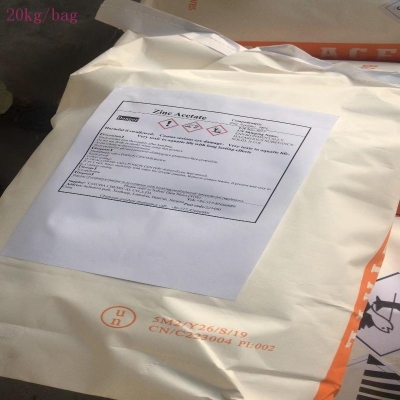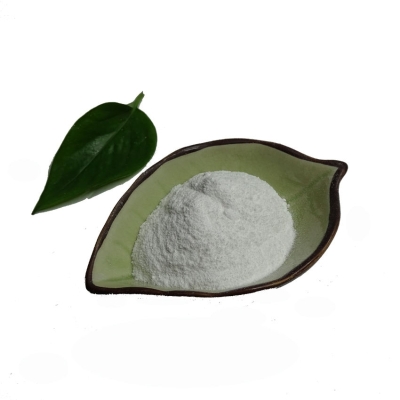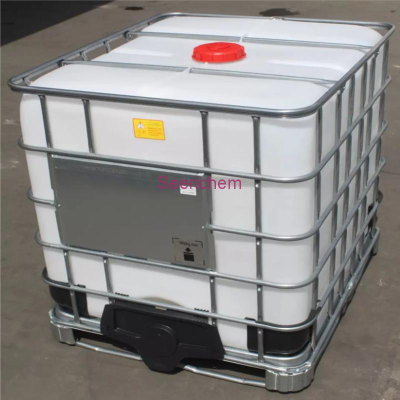-
Categories
-
Pharmaceutical Intermediates
-
Active Pharmaceutical Ingredients
-
Food Additives
- Industrial Coatings
- Agrochemicals
- Dyes and Pigments
- Surfactant
- Flavors and Fragrances
- Chemical Reagents
- Catalyst and Auxiliary
- Natural Products
- Inorganic Chemistry
-
Organic Chemistry
-
Biochemical Engineering
- Analytical Chemistry
-
Cosmetic Ingredient
- Water Treatment Chemical
-
Pharmaceutical Intermediates
Promotion
ECHEMI Mall
Wholesale
Weekly Price
Exhibition
News
-
Trade Service
From April 17th to May 17th, Shandong will send 8 inspection teams to 16 cities to carry out a one-month special campaign for key air pollution remediation
.
Scope of implementation: 16 cities across the province, focusing on the 168 key cities nationwide that ranked low in environmental air quality in March 2019 (Jinan, Zibo, Zaozhuang, Dongying, Weifang, Tai'an, Linyi, Liaocheng, Binzhou, etc.
) )
.
? Inspection content:? (1) Industrial pollution remediation? 1.
Ultra-low emission operation of coal-fired boilers
.
The ultra-low emission operation of coal-fired boilers above 10 steamed tons/hour (35 steamed tons/hour in transmission channel cities), and the coal consumption account (changes in the same period from October 2018 to March 2019)
.
? 2.
Industrial pollution source treatment
.
Focus on the inspection of the implementation of environmental protection requirements for the construction and operation of VOCs pollution prevention facilities in petrochemical, organic chemical, surface coating, packaging and printing industries, and the discharge of pollutants; and the construction of particulate pollution prevention facilities in industries such as building stone processing and building material manufacturing.
, The implementation of environmental protection requirements such as operation and pollutant discharge standards, and the implementation of environmental assessment requirements and particulate measures during the inspection and construction of uncompleted projects
.
? 3.
Industrial furnace capacity renovation
.
One-stage gas generators are eliminated, whether there is a resurgence of production lines that have been shut down and banned; small and medium-sized gas generators meet emission standards and meet environmental protection requirements
.
? 4.
"Scattered and polluted" corporate governance
.
Whether the "scattered and polluted" enterprises listed in the remediation category meet the remediation requirements; whether there is a phenomenon of relocation and resurgence of the "scattered and polluted" enterprises that have been banned
.
? 5.
Unorganized emission control of industrial enterprises
.
Implementation of unorganized emission control measures in key industries such as iron and steel, building materials, non-ferrous metals, thermal power, coking and foundry, and coal-fired boilers; implementation of unorganized emission control measures such as material (including waste residue) transportation, loading and unloading, storage, transfer, and enterprise production processes Situation: Dust management and control of projects such as the utilization of fly ash, building demolished stones, etc.
.
? (2) Motor vehicle pollution control situation? 1.
Inspect the road in use
.
In key road sections, the departments of ecological environment, public security traffic management, and transportation jointly carried out road inspections and road inspections on diesel vehicles, and spot-checked the points that have been inspected in each city
.
? 2.
Cars are inspected at homes where vehicles are parked centrally
.
In logistics parks, industrial parks, cargo distribution centers, public transportation stations and other centralized vehicle parking areas, as well as logistics and freight, industrial and mining enterprises, long-distance passenger transport, environmental sanitation, postal services, tourism, maintenance and other key units, carry out parking areas for heavy diesel trucks and off-roads Examination of exhaust emissions from mobile machinery
.
? 3.
Oil and gas recovery and governance
.
Gas station, oil storage depot, and tank truck oil and gas recovery and treatment; the installation and operation of automatic monitoring equipment for oil and gas recovery at gas stations with annual sales of more than 5,000 tons of gasoline
.
? (3) Remediation of fugitive dust pollution? 1.
Prevention and control of fugitive dust during construction
.
The implementation of "six hundred percent" on construction sites; construction sites that have installed online monitoring to monitor the operation of facilities online; various types of earth and stone excavation and construction, and implementation of dust suppression measures
.
? 2.
Material transportation dust control
.
For vehicles transporting muck, earth, sand, gravel, garbage, mortar, coal and other bulk and fluid materials, the implementation of dust control measures, whether muck trucks are equipped with satellite positioning devices in accordance with regulations, and drive in accordance with the prescribed route and time
.
? 3.
Road dust pollution control
.
Implementation of the system of regular cleaning of roads, regular machine sweeping, and regular watering
.
? 4.
Open-pit mine dust remediation
.
Implementation of dust control measures in open pit mining
.
? The inspection adopts the "four non-two straights" approach, and all hidden dangers found out will be disclosed online and exposed by the provincial radio and television station.
At the same time, the relevant responsible persons will be held seriously accountable
.
.
Scope of implementation: 16 cities across the province, focusing on the 168 key cities nationwide that ranked low in environmental air quality in March 2019 (Jinan, Zibo, Zaozhuang, Dongying, Weifang, Tai'an, Linyi, Liaocheng, Binzhou, etc.
) )
.
? Inspection content:? (1) Industrial pollution remediation? 1.
Ultra-low emission operation of coal-fired boilers
.
The ultra-low emission operation of coal-fired boilers above 10 steamed tons/hour (35 steamed tons/hour in transmission channel cities), and the coal consumption account (changes in the same period from October 2018 to March 2019)
.
? 2.
Industrial pollution source treatment
.
Focus on the inspection of the implementation of environmental protection requirements for the construction and operation of VOCs pollution prevention facilities in petrochemical, organic chemical, surface coating, packaging and printing industries, and the discharge of pollutants; and the construction of particulate pollution prevention facilities in industries such as building stone processing and building material manufacturing.
, The implementation of environmental protection requirements such as operation and pollutant discharge standards, and the implementation of environmental assessment requirements and particulate measures during the inspection and construction of uncompleted projects
.
? 3.
Industrial furnace capacity renovation
.
One-stage gas generators are eliminated, whether there is a resurgence of production lines that have been shut down and banned; small and medium-sized gas generators meet emission standards and meet environmental protection requirements
.
? 4.
"Scattered and polluted" corporate governance
.
Whether the "scattered and polluted" enterprises listed in the remediation category meet the remediation requirements; whether there is a phenomenon of relocation and resurgence of the "scattered and polluted" enterprises that have been banned
.
? 5.
Unorganized emission control of industrial enterprises
.
Implementation of unorganized emission control measures in key industries such as iron and steel, building materials, non-ferrous metals, thermal power, coking and foundry, and coal-fired boilers; implementation of unorganized emission control measures such as material (including waste residue) transportation, loading and unloading, storage, transfer, and enterprise production processes Situation: Dust management and control of projects such as the utilization of fly ash, building demolished stones, etc.
.
? (2) Motor vehicle pollution control situation? 1.
Inspect the road in use
.
In key road sections, the departments of ecological environment, public security traffic management, and transportation jointly carried out road inspections and road inspections on diesel vehicles, and spot-checked the points that have been inspected in each city
.
? 2.
Cars are inspected at homes where vehicles are parked centrally
.
In logistics parks, industrial parks, cargo distribution centers, public transportation stations and other centralized vehicle parking areas, as well as logistics and freight, industrial and mining enterprises, long-distance passenger transport, environmental sanitation, postal services, tourism, maintenance and other key units, carry out parking areas for heavy diesel trucks and off-roads Examination of exhaust emissions from mobile machinery
.
? 3.
Oil and gas recovery and governance
.
Gas station, oil storage depot, and tank truck oil and gas recovery and treatment; the installation and operation of automatic monitoring equipment for oil and gas recovery at gas stations with annual sales of more than 5,000 tons of gasoline
.
? (3) Remediation of fugitive dust pollution? 1.
Prevention and control of fugitive dust during construction
.
The implementation of "six hundred percent" on construction sites; construction sites that have installed online monitoring to monitor the operation of facilities online; various types of earth and stone excavation and construction, and implementation of dust suppression measures
.
? 2.
Material transportation dust control
.
For vehicles transporting muck, earth, sand, gravel, garbage, mortar, coal and other bulk and fluid materials, the implementation of dust control measures, whether muck trucks are equipped with satellite positioning devices in accordance with regulations, and drive in accordance with the prescribed route and time
.
? 3.
Road dust pollution control
.
Implementation of the system of regular cleaning of roads, regular machine sweeping, and regular watering
.
? 4.
Open-pit mine dust remediation
.
Implementation of dust control measures in open pit mining
.
? The inspection adopts the "four non-two straights" approach, and all hidden dangers found out will be disclosed online and exposed by the provincial radio and television station.
At the same time, the relevant responsible persons will be held seriously accountable
.







